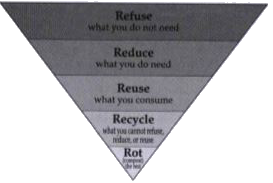Name the phenomenon that governs the following:
Tails of mice were surgically removed for several generations, still mice had tails in the following generations.
Step-by-Step Solution:
1. Understanding the Question: The question asks about a phenomenon that explains why mice, even after having their tails surgically removed for several generations, still have tails in subsequent generations.
2. Identifying the Key Concept: The key concept here is the distinction between inherited and non-inherited traits. The surgical removal of the tail is an acquired characteristic, which does not affect the genetic information passed on to the next generation.
3. Explaining Acquired Characteristics: Acquired characteristics are traits that an organism develops during its lifetime due to environmental influences or experiences. In this case, the surgical removal of the tail is an acquired characteristic.
4. Understanding Genetic Inheritance: Genetic traits are passed down through genes from parents to offspring. Since the surgical removal of the tail does not alter the genetic makeup of the mice, the genetic information for having a tail remains intact.
5. Conclusion: Therefore, the phenomenon that governs this situation is that acquired characteristics (like the removal of the tail) are not inherited. This means that the next generations of mice will still have tails because the genetic information for tails is still present in their DNA.
6. Final Answer: The phenomenon is known as "non-inherited characteristics" or "acquired characteristics."
---
টপার এই প্রশ্নগুলো সমাধান করেছে
- NEW CHAPTERS AND QUESTIONS BASED ON LATEST TYPOLOGIES INTRODUCED BY CBSE FOR 2021-22 EXAMINATION Book:OSWAL PUBLICATIONChapter:NEW CHAPTERS AND QUESTIONS BASED ON LATEST TYPOLOGIES INTRODUCED BY CBSE FOR 2021-22 EXAMINATION Exercise:HEREDITY (VISUAL CASE - BASED QUESTIONS)
Explore 9 Videos
- NEW CHAPTERS AND QUESTIONS BASED ON LATEST TYPOLOGIES INTRODUCED BY CBSE FOR 2021-22 EXAMINATION Book:OSWAL PUBLICATIONChapter:NEW CHAPTERS AND QUESTIONS BASED ON LATEST TYPOLOGIES INTRODUCED BY CBSE FOR 2021-22 EXAMINATION Exercise:HEREDITY
Explore 1 Video
- NEW CHAPTERS AND QUESTIONS BASED ON LATEST TYPOLOGIES INTRODUCED BY CBSE FOR 2021-22 EXAMINATION Book:OSWAL PUBLICATIONChapter:NEW CHAPTERS AND QUESTIONS BASED ON LATEST TYPOLOGIES INTRODUCED BY CBSE FOR 2021-22 EXAMINATION Exercise:HEREDITY (SELF ASSESSMENT) ( Short Answer Type Questions - II )
Explore 2 Videos
- MANAGEMENT OF NATURAL RESOURCES Book:OSWAL PUBLICATIONChapter:MANAGEMENT OF NATURAL RESOURCES Exercise:CASE-BASED MCQs
Explore 15 Videos
- NTSE 2019 - 20 Book:OSWAL PUBLICATIONChapter:NTSE 2019 - 20 Exercise:(BIOLOGY) WHY DO WE FALL ILL (STAGE - 1)
Explore 2 Videos
সম্পর্কিত প্রশ্ন
Mendel was the first scientist to study the pattern of inheritance. He is known as the father of genetics and proposed the laws of inheritance. He selected pea plants (Pisum sativum) to carry out his study on the inheritance of characters from parents to offspring. Mendel carried the process of self-pollination followed by cross-pollination in his experiment.
Which of these is a dominant trait?
View SolutionEvolution is the sequence of gradual changes which takes place in the primitive organisms, over millions of years, in which new species are produced. Variations that resulted in formation of new species occurred basically due to errors in DNA copying as well as due to sexual reproduction.
Which of these statements is correct about the acquired and inherited traits?
View SolutionDefine evolution. How does it occur ? Explain how fossils provide evidences in support of evolution ?
View SolutionObserve the following diagram

Choose the waste management strategy that is matched with correct example.


View SolutionBacterial disease is :
View SolutionA scientist cut the tails of mice but htier young ones had tails. He disproved the theory of :
View SolutionWeismann cut off tails of mice generation after generation but tails neither disappeared nor shortened showing that :
View SolutionWeismann cut off tails of mice generation after generation but tails neither disppeared nor shortened showing that
View SolutionWeismann cut the tail of mice for
View SolutionIn a famous experiment, A Weismann cutt off tails of newborn mice generation after generation. At the end of experiment, tails of mice neither disappeared nor shortened. This experiment
View Solutionयदि किसी चूहे की पूँछ काट दी जाए और लगातार उसकी संतति की भी पूँछ काटते रहे तो क्या इससे बिना पूँछ के चूहों की जाति आरम्भ हो सकती है?
View SolutionWeismann cut off tails of mice generation after generation but tails neither disappeared nor shortened showing that :
View Solutionवैज्ञानिक जिन्होने कई पीढियों तक नवजात चूहों की पूँछ काटी परन्तु भी इस लक्षण की वंशीगति नही हुई ।
View SolutionIn a famous experiment, A Weismann cutt off tails of newborn mice generation after generation. At the end of experiment, tails of mice neither disappeared nor shortened. This experiment
View SolutionWeismann cut off tails of mice generation after generation but tails neither disappeared nor shortened showing that :
View SolutionWeismann cut off tails of mice generation but tails neither disappeared nor shortened showing that
View Solution